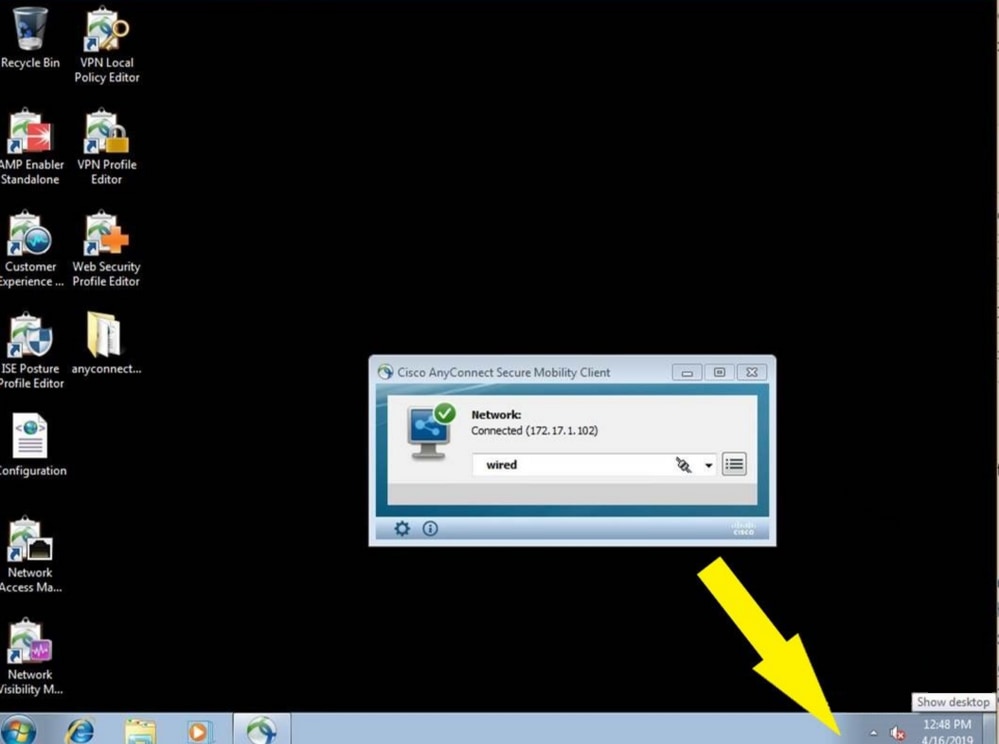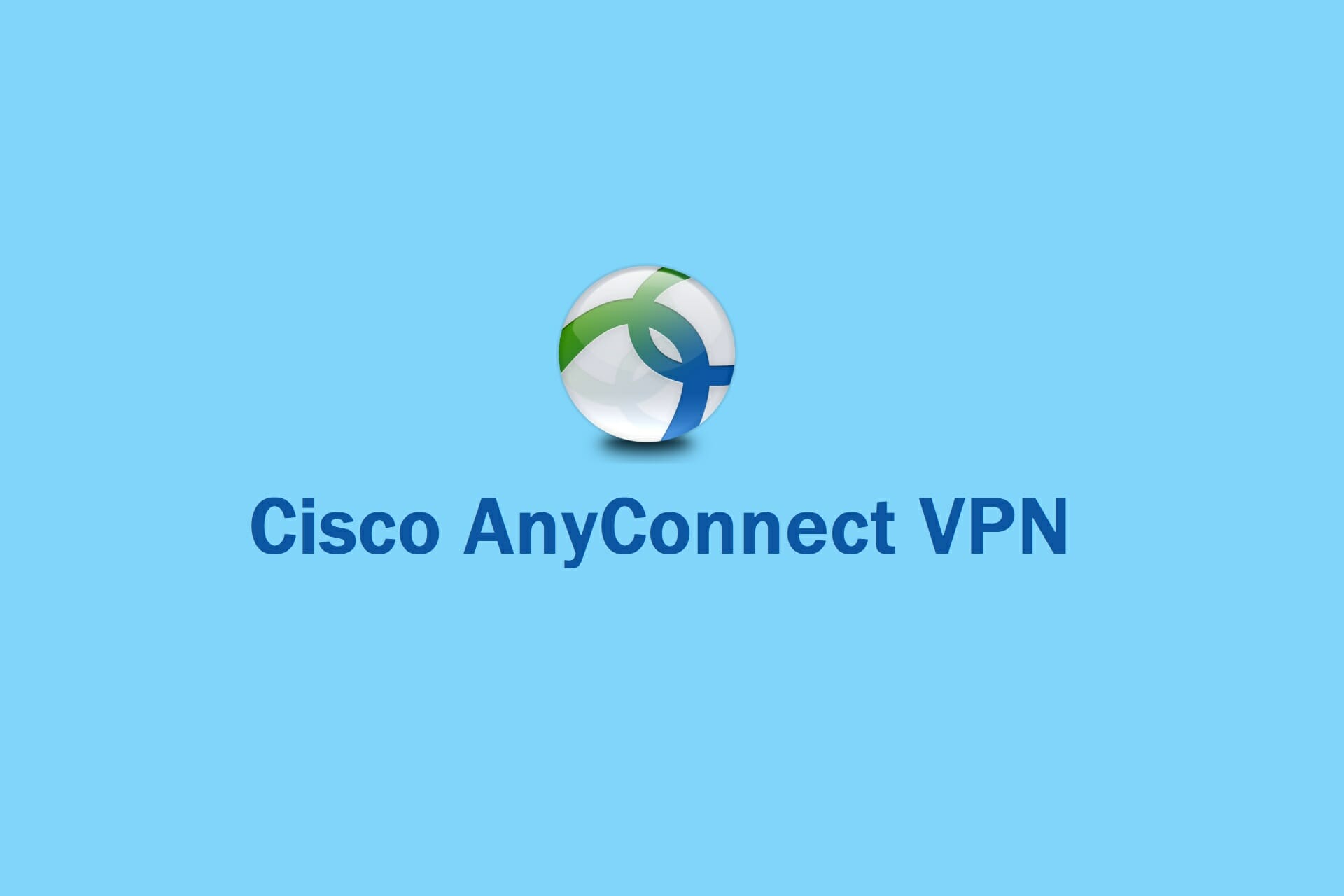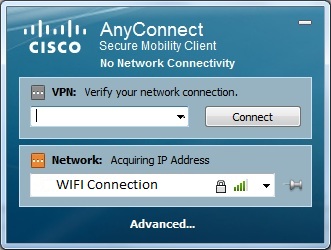The EOL designation for the Cisco VPN Client v5.0.07.0440-the most recent and stable version-means that newer operating systems, like Windows 10, are not officially supported by the client. Windows 10 Anniversary users without the Cisco VPN Client should read our article How to Install and Fix Cisco VPN Client on Windows 10. Step 1 – Download and Extract the Cisco VPN Client Head to the Firewall.cx Cisco Tools & Applications download section to download and extract the Cisco IPSec VPN Client installation files on your computer. Network Access Manager – It is a client software that provides a secure Layer 2 network. VPN Posture Hostscan – Provides the. I installed Cisco AnyConnect Secure Mobility Client into my Windows 10 laptop but when I run it it pops out VPN Service not available.
Objective
The objective of this document is to show you basic troubleshooting steps on some common errors on the Cisco AnyConnect Secure Mobility Client. When installing the Cisco AnyConnect Secure Mobility Client, errors may occur and troubleshooting may be needed for a successful setup.
Note that the errors discussed in this document is not an exhaustive list and varies with the configuration of the device used.
For additional information on AnyConnect licensing on the RV340 series routers, check out the article AnyConnect Licensing for the RV340 Series Routers.
Software Version
AnyConnect v4.x (Link to download)
Basic Troubleshooting on Cisco AnyConnect Secure Mobility Client Errors
Note: Before attempting to troubleshoot, it is recommended to gather some important information first about your system that might be needed during the troubleshooting process. To learn how, click here.
1. Problem: Network Access Manager fails to recognize your wired adapter.
Solution: Try unplugging your network cable and reinserting it. If this does not work, you may have a link issue. The Network Access Manager may not be able to determine the correct link state of your adapter. Check the Connection Properties of your Network Interface Card (NIC) driver. You may have a 'Wait for Link' option in the Advanced Panel. When the setting is On, the wired NIC driver initialization code waits for auto negotiation to complete and then determines if a link is present.
2. Problem: When AnyConnect attempts to establish a connection, it authenticates successfully and builds the Secure Socket Layer (SSL)session, but then the AnyConnect client crashes in the vpndownloader if using Label-Switched Path (LSP) or NOD32 Antivirus.
Solution: Remove the Internet Monitor component in version 2.7 and upgrade to version 3.0 of ESET NOD32 AV.
3. Problem: If you are using an AT&T Dialer, the client operating system sometimes experiences a blue screen, which causes the creation of a mini dump file.

Solution: Upgrade to the latest 7.6.2 AT&T Global Network Client.
4. Problem: When using McAfee Firewall 5, a User Datagram Protocol (UDP)Datagram Transport Layer Security (DTLS) connection cannot be established.
Solution: In the McAfee Firewall central console, choose Advanced Tasks > Advanced options and Logging and uncheck the Block incoming fragments automatically check box in McAfee Firewall.
5. Problem: The connection fails due to lack of credentials.
Solution: The third-party load balancer has no insight into the load on the Adaptive Security Appliance (ASA) devices. Because the load balance functionality in the ASA is intelligent enough to evenly distribute the VPN load across the devices, using the internal ASA load balancing instead is recommended.
6. Problem: The AnyConnect client fails to download and produces the following error message:
Solution: Upload the patch update to version 1.2.1.38 to resolve all dll issues.
7. Problem: If you are using Bonjour Printing Services, the AnyConnect event logs indicate a failure to identify the IP forwarding table.
Solution: Disable the Bonjour Printing Service by typing net stop “bonjour service” at the command prompt. A new version of mDNSResponder (1.0.5.11) has been produced by Apple. To resolve this issue, a new version of Bonjour is bundled with iTunes and made available as a separate download from the Apple web site.
8. Problem: An error indicates that the version of TUN or network tunnel is already installed on this system and is incompatible with the AnyConnect client.
Solution: Uninstall the Viscosity OpenVPN Client.
9. Problem: If a Label-Switched Path (LSP) module is present on the client, a Winsock catalog conflict may occur.
Solution: Uninstall the LSP module.
10. Problem: If you are connecting with a Digital Subscriber Line (DSL) router, DTLS traffic may fail even if successfully negotiated.
Solution: Connect to a Linksys router with factory settings. This setting allows a stable DTLS session and no interruption in pings. Add a rule to allow DTLS return traffic.
11. Problem: When using AnyConnect on some Virtual Machine Network Service devices, performance issues have resulted.
Solution: Uncheck the binding for all IM devices within the AnyConnect virtual adapter. The application dsagent.exe resides in C:WindowsSystemdgagent. Although it does not appear in the process list, you can see it by opening sockets with TCPview (sysinternals). When you terminate this process, normal operation of AnyConnect returns.
12. Problem: You receive an “Unable to Proceed, Cannot Connect to the VPN Service” message. The VPN service for AnyConnect is not running.
Solution: Determine if another application conflicted with the service by going to the Windows Administration Tools then make sure that the Cisco AnyConnect VPN Agent is not running. If it is running and the error message still appears, another VPN application on the workstation may need to be disabled or even uninstalled. After taking that action, reboot, and repeat this step.
13. Problem: When Kaspersky 6.0.3 is installed (even if disabled), AnyConnect connections to the ASA fail right after CSTP state = CONNECTED. The following message appears:
Solution: Uninstall Kaspersky and refer to their forums for additional updates.
14. Problem: If you are using Routing and Remote Access Service (RRAS), the following termination error is returned to the event log when AnyConnect attempts to establish a connection to the host device:
Solution: Disable the RRAS service.
15. Problem: If you are using a EVDO wireless card and Venturi driver while a client disconnect occurred, the event log reports the following:
Solutions:
- Check the Application, System, and AnyConnect event logs for a relating disconnect event and determine if a NIC card reset was applied at the same time.
- Ensure that the Venturi driver is up to date. Disable Use Rules Engine in the 6.7 version of the AT&T Communications Manager.
If you encounter other errors, contact the support center for your device.

For further information and community discussion on AnyConnect licensing updates, click here.
For AnyConnect Licensing FAQs, click here.
Environment:
My customer is using Cisco AnyConnect not just as VPN client, either for NAC (Network Admission Control) aka. 802.1x authentication. That means, without this AnyConnect software and other requirements (ex. certificate), the workstation is not able to access to the corporate network. So it’s a NOGO, if this client during the upgrade (software/OS) process is not working properly.
Cisco Anyconnect Network Access Manager Service Not Starting 1067
Situation:

Cisco Anyconnect Vpn Not Working
Following issue has been realised during the Windows 10 feature upgrade (1511 –> 1607). But we had the same problem when the AnyConnect client has to be updated (4.4.04030 –> 4.5.02036) regarding the Krack vulnerability.
Issues:
- Some Windows 10 clients had a BSOD during the feature upgrade from version 1511 to 1607. Hereby, the upgrade parameter /MigrateDrivers all has been used.
- Cisco AnyConnect client couldn’t be updated from version 4.4.04030 to 4.5.02036. Hereby, the precise issue is, the Network Access Manager Filter Driver (3.1.6010 –> 4.3.5009) couldn’t be renewed.
Workaround by Cisco:
We opened an official Cisco ticket to solve this issue. They mentioned, the software upgrade process has to be straight forward. It means, uninstall old version of AnyConnect client –> reboot the client –> install the new client version –> reboot the client.
It’s not working correctly, because the old driver cannot be uninstalled successfully. The new software version can be installed without any issue, but under the hood the driver cannot be renewed.
Anyway, this workaround is not really a good option in our case. Because as I said, without this AnyConnect client the workstation is definitely offline and ex. cannot continue any software deployment process.
Resolution:
- Copy the AnyConnectFix.ps1 script locally246[string]$acdriverpath=${env:ProgramFiles(x86)}+'CiscoCisco AnyConnect Secure Mobility Clientdrv'[string]$acnamfdsys=Select-String-Path'$env:windirinf*.inf'-patternacnamfd.sys|Select-object-first1|select-ExpandPropertyPath#-----------------------------------------------------------------------------------
- Configure Wired AutoConfig (Dot3svc) service start for demand.
- Configure Cisco AnyConnect Network Access Manager (nam) service stat for auto.
- Configure Cisco AnyConnect Network Access Manager Logon Module (namlm) service stat for auto.
- Install Cisco AnyConnect Diagnostic and Reporting Tool
- Reboot
- Starting the AnyConnectFix.ps1 upgrade script at the startup
- Unregister scheduled task and cleanup the left-over files
This workaround has been officially confirmed by Cisco.
Microsoft case:
For this case Cisco has involved Microsoft as well, because Cisco said, ‘it’s an operating system issue‘. As I have already heard many times…
“… if a migration has every occurred on the machine, numerous artifacts are left behind which will interfere with subsequent installs or upgrades of the AnyConnect VPN’s (or any VPN for that matter). The combination of various keys varies and cleaning some of them will sometimes work.
For example, we see at least 3 scenarios:
- ACNAMFDBCTL.DLL is not removed or unregistered.
- ACNAMFD.SYS is not removed and service remains active
- VPNVA is not removed and service remains active (sometimes not active but present)
- Or any combination of the above (this is what made this complex since the repro was not consistent and varied between machines… what works for one machine may fail on another).
Each of these will cause a failure of subsequent installs of AnyConnect….”
Conclusion:
Both cases are still open, but our “self designed” upgrade process, we can detect the correct version of each software components and which is more important, the correct NAM filter driver has been successfully registered. It has to be used as workaround, but our Cisco AnyConnect client upgrade for more than 1’400 workstations has been worked properly.
Cisco Anyconnect Network Access Manager Service Not Starting Free
Our customer is happy –> we are happy!
